Ford Transit 2020 Owner's Manual

|
|
|
owner.ford.com |
ford.ca |
|
September 2019
First Printing
Litho in U.S.A.
2020 TRANSIT Owner’s Manual
Owner’s Manual 2020TRANSIT
LK3J 19A321 AA

The information contained in this publication was correct at the time of going to print. In the interest of continuous development, we reserve the right to change specifications, design or equipment at any time without notice or obligation. No part of this publication may be reproduced, transmitted, stored in a retrieval system or translated into any language in any form by any means without our written permission. Errors and omissions excepted.
© Ford Motor Company 2019
All rights reserved.
Part Number: LK3J 19A321 AA 201908 20190823091629
California Proposition 65
 WARNING: Operating, servicing and maintaining a passenger vehicle or off-highway motor vehicle can expose you to chemicals including engine exhaust, carbon monoxide, phthalates, and lead, which are known to the State of California to cause cancer and birth defects or other reproductive harm. To minimize exposure, avoid breathing exhaust, do not idle the engine except as necessary, service your vehicle in a well-ventilated area and wear gloves or wash your hands frequently when servicing your vehicle. For more information go to www.P65Warnings.ca.gov/passenger-vehicle.
WARNING: Operating, servicing and maintaining a passenger vehicle or off-highway motor vehicle can expose you to chemicals including engine exhaust, carbon monoxide, phthalates, and lead, which are known to the State of California to cause cancer and birth defects or other reproductive harm. To minimize exposure, avoid breathing exhaust, do not idle the engine except as necessary, service your vehicle in a well-ventilated area and wear gloves or wash your hands frequently when servicing your vehicle. For more information go to www.P65Warnings.ca.gov/passenger-vehicle.
 WARNING: Battery posts, terminals and related accessories contain lead and lead compounds, chemicals known to the State of California to cause cancer and reproductive harm.
WARNING: Battery posts, terminals and related accessories contain lead and lead compounds, chemicals known to the State of California to cause cancer and reproductive harm.
Wash your hands after handling.


Table of Contents
Introduction |
|
About This Manual .......................................... |
9 |
Symbols Glossary ............................................ |
9 |
Data Recording ................................................. |
11 |
Perchlorate ....................................................... |
15 |
Replacement Parts Recommendation |
|
........................................................................... |
16 |
Special Notices ............................................... |
16 |
Mobile Communications Equipment |
|
........................................................................... |
18 |
Export Unique Options ................................ |
18 |
Environment |
|
Protecting the Environment ....................... |
19 |
Child Safety |
|
General Information ..................................... |
20 |
Installing Child Restraints .......................... |
22 |
Booster Seats ................................................. |
38 |
Child Restraint Positioning ........................ |
40 |
Child Safety Locks ........................................ |
42 |
Seatbelts |
|
Principle of Operation ................................. |
44 |
Fastening the Seatbelts ............................. |
45 |
Seatbelt Height Adjustment ..................... |
47 |
Seatbelt Warning Lamp and Indicator |
|
Chime ............................................................. |
47 |
Seatbelt Reminder ....................................... |
48 |
Child Restraint and Seatbelt |
|
Maintenance .............................................. |
50 |
Seatbelt Extensions ..................................... |
50 |
Supplementary Restraints |
|
System |
|
Principle of Operation .................................. |
51 |
Driver and Passenger Airbags ................... |
52 |
Side Airbags .................................................... |
58 |
Safety Canopy™ ........................................... |
59 |
Crash Sensors and Airbag Indicator ...... |
60 |
Airbag Disposal ............................................... |
61 |
911 Assist |
|
What Is 911 Assist .......................................... |
62 |
Emergency Call Requirements ................ |
62 |
Emergency Call Limitations ...................... |
63 |
Keys and Remote Controls |
|
Principle of Operation ................................. |
64 |
General Information on Radio |
|
Frequencies ................................................ |
64 |
Remote Control - Vehicles Without: |
|
Passive Anti-Theft System (PATS) |
|
.......................................................................... |
65 |
Remote Control - Vehicles With: Passive |
|
Anti-Theft System (PATS) .................... |
66 |
Remote Control - Vehicles With: Power |
|
Sliding Door ................................................ |
68 |
Replacing a Lost Key or Remote Control |
|
........................................................................... |
70 |
MyKey™ |
|
Principle of Operation ................................... |
71 |
MyKey Settings ................................................ |
71 |
Creating a MyKey ........................................... |
72 |
Programming a MyKey ................................ |
72 |
Clearing All MyKeys ...................................... |
74 |
Checking MyKey System Status .............. |
74 |
Using MyKey With Remote Start |
|
Systems ........................................................ |
75 |
MyKey – Troubleshooting ........................... |
75 |
Doors and Locks |
|
Locking and Unlocking ................................ |
76 |
Sliding Door - Vehicles |
|
Without:PowerSlidingDoor |
|
Sliding Door Precautions ........................... |
80 |
Opening the Sliding Door .......................... |
80 |
Closing the Sliding Door .............................. |
81 |
1
2020 Transit (TTH) Canada/United States of America, LK3J 19A321 AA enUSA, Edition date: 201908, First-Printing

Table of Contents
Sliding Door - Vehicles With: |
|
Power Sliding Door |
|
Sliding Door Precautions ........................... |
82 |
Opening the Sliding Door ........................... |
82 |
Closing the Sliding Door ............................. |
83 |
Stopping the Sliding Door Movement |
|
.......................................................................... |
84 |
Resetting the Power Sliding Door .......... |
84 |
Sliding Door – Troubleshooting .............. |
85 |
Keyless Entry |
|
Locating the Keyless Entry Keypad ........ |
87 |
Master Access Code ..................................... |
87 |
Keyless Entry Settings ................................. |
87 |
Locking and Unlocking the Doors Using |
|
Keyless Entry ............................................... |
87 |
Keyless Entry – Troubleshooting ............ |
88 |
Security |
|
Passive Anti-Theft System - Vehicles |
|
With: Passive Anti-Theft System |
|
(PATS) .......................................................... |
89 |
Anti-Theft Alarm - Vehicles Without: |
|
Anti-Theft Alarm Horn with Integral |
|
Battery .......................................................... |
90 |
Anti-Theft Alarm - Vehicles With: |
|
Anti-Theft Alarm Horn with Integral |
|
Battery ........................................................... |
91 |
Power Running Boards |
|
Using Power Running Boards ................... |
93 |
Steering Wheel |
|
Adjusting the Steering Wheel .................. |
96 |
Wipers and Washers |
|
Windshield Wipers ........................................ |
97 |
Autowipers ....................................................... |
97 |
Windshield Washers .................................... |
98 |
2
Lighting |
|
General Information .................................. |
100 |
Lighting Control ........................................... |
100 |
Autolamps ...................................................... |
101 |
Instrument Lighting Dimmer ................... |
102 |
Daytime Running Lamps .......................... |
102 |
Automatic High Beam Control ............... |
103 |
Front Fog Lamps ......................................... |
104 |
Direction Indicators .................................... |
105 |
Interior Lamps .............................................. |
105 |
Cargo Lamps ................................................ |
106 |
Windows and Mirrors |
|
Power Windows ........................................... |
107 |
Exterior Mirrors ............................................. |
108 |
Interior Mirror ................................................ |
109 |
Instrument Cluster |
|
Gauges ............................................................. |
110 |
Warning Lamps and Indicators ................ |
111 |
Information Displays |
|
General Information .................................... |
115 |
Trip Computer ................................................ |
117 |
Personalized Settings ................................. |
119 |
Climate Control |
|
Manual Climate Control ............................. |
121 |
Hints on Controlling the Interior Climate |
|
......................................................................... |
122 |
Rear Passenger Climate Controls .......... |
123 |
Heated Rear Window ................................. |
123 |
Heated Exterior Mirrors - Vehicles |
|
Without: Heated Rear Window .......... |
123 |
Heated Exterior Mirrors - Vehicles With: |
|
Heated Rear Window ............................. |
123 |
Auxiliary Heater ............................................ |
124 |
Remote Start ................................................. |
125 |
2020 Transit (TTH) Canada/United States of America, LK3J 19A321 AA enUSA, Edition date: 201908, First-Printing

Table of Contents
Interior Air Quality |
|
What Is the Cabin Air Filter ....................... |
127 |
Locating the Cabin Air Filter ..................... |
127 |
Changing the Cabin Air Filter ................... |
127 |
Seats |
|
Sitting in the Correct Position ................. |
128 |
Head Restraints ............................................ |
128 |
Manual Seats - Vehicles With: 2-Way |
|
Manual Seat .............................................. |
129 |
Manual Seats - Vehicles With: 4-Way |
|
Manual Seat ............................................... |
131 |
Power Seats ................................................... |
133 |
Rear Seats ...................................................... |
135 |
Heated Seats ................................................ |
138 |
Auxiliary Power Points |
|
Auxiliary Power Points ............................... |
139 |
Cigar Lighter ................................................... |
141 |
Storage Compartments |
|
Overhead Console ....................................... |
142 |
Bottle Holders ............................................... |
142 |
Overhead Storage ....................................... |
142 |
Rear Overhead Storage ............................. |
142 |
Starting and Stopping the |
|
Engine |
|
General Information ................................... |
144 |
Ignition Switch .............................................. |
144 |
Steering Wheel Lock .................................. |
145 |
Starting a Gasoline Engine ...................... |
145 |
Starting a Diesel Engine ............................ |
146 |
Switching Off the Engine ......................... |
148 |
Engine Block Heater ................................... |
148 |
Auto-Start-Stop - 3.5L |
|
Ecoboost™, 2.0L EcoBlue |
|
What Is Auto-Start-Stop .......................... |
150 |
Auto-Start-Stop Precautions ................. |
150 |
3
Switching Auto-Start-Stop On and Off |
|
......................................................................... |
150 |
Stopping the Engine ................................... |
150 |
Restarting the Engine ................................ |
150 |
Auto-Start-Stop Indicators ...................... |
151 |
Auto-Start-Stop – Troubleshooting |
|
.......................................................................... |
151 |
Fuel and Refueling |
|
Safety Precautions ...................................... |
153 |
Fuel Quality - 2.0L EcoBlue, Diesel ....... |
153 |
Fuel Quality - 3.5L Duratec, E85 ............ |
156 |
Fuel Quality - 3.5L Duratec/3.5L |
|
Ecoboost™, Gasoline ............................. |
157 |
Fuel Filler Funnel Location ....................... |
158 |
Running Out of Fuel ................................... |
158 |
Refueling ......................................................... |
159 |
Engine Emission Control |
|
Emission Law ................................................ |
163 |
Catalytic Converter - 3.5L Duratec/3.5L |
|
Ecoboost™ ................................................ |
164 |
Selective Catalytic Reductant System - |
|
2.0L EcoBlue ............................................. |
165 |
Diesel Particulate Filter ............................. |
168 |
Transmission |
|
Automatic Transmission ........................... |
174 |
Tow/Haul ........................................................ |
176 |
All-Wheel Drive |
|
Using All-Wheel Drive ................................ |
178 |
Brakes |
|
General Information ................................... |
183 |
Hints on Driving With Anti-Lock Brakes |
|
......................................................................... |
183 |
Hill Start Assist ............................................. |
183 |
2020 Transit (TTH) Canada/United States of America, LK3J 19A321 AA enUSA, Edition date: 201908, First-Printing

Table of Contents
Parking Brake - Vehicles With:
Conventional Mechanical
Parking Brake
Applying the Parking Brake .................... |
186 |
Releasing the Parking Brake .................. |
186 |
Parking Brake Audible Warning ............. |
186 |
Parking Brake – Troubleshooting .......... |
186 |
Parking Brake - Vehicles With: |
|
Push Down Parking Brake |
|
Applying the Parking Brake ..................... |
187 |
Releasing the Parking Brake ................... |
187 |
Pushing the Parking Brake Lever Down |
|
......................................................................... |
187 |
Parking Brake Audible Warning .............. |
187 |
Parking Brake – Troubleshooting .......... |
188 |
Traction Control |
|
Principle of Operation ............................... |
189 |
Using Traction Control .............................. |
189 |
Stability Control |
|
Principle of Operation ............................... |
190 |
Using Stability Control ............................... |
191 |
Parking Aids |
|
Principle of Operation ................................ |
192 |
Parking Aid ..................................................... |
192 |
Rear Parking Aid .......................................... |
194 |
Front Parking Aid ......................................... |
196 |
Side Sensing System ................................. |
198 |
Active Park Assist ...................................... |
200 |
Rear View Camera - Vehicles With: |
|
Parking Aid Camera ............................... |
202 |
180 Degree Camera ................................... |
205 |
Cruise Control |
|
Principle of Operation ............................... |
207 |
Using Cruise Control .................................. |
207 |
Using Adaptive Cruise Control .............. |
208 |
4
Driving Aids |
|
Speed Limiter ................................................ |
216 |
Driver Alert ...................................................... |
216 |
Lane Keeping System ................................ |
219 |
Blind Spot Information System ............. |
223 |
Cross Traffic Alert ....................................... |
226 |
Eco ................................................................... |
230 |
Steering ........................................................... |
231 |
Pre-Collision Assist .................................... |
232 |
Front View Camera .................................... |
236 |
Drive Control ................................................. |
237 |
Load Carrying |
|
Roof Racks and Load Carriers - Bus ..... |
239 |
Roof Racks and Load Carriers - Van |
|
........................................................................ |
239 |
Load Retaining Fixtures ............................ |
239 |
Load Limit ..................................................... |
240 |
Towing |
|
Towing a Trailer ........................................... |
245 |
Recommended Towing Weights - |
|
Chassis Cab/Crew Van/Cutaway/Van |
|
........................................................................ |
246 |
Recommended Towing Weights - M2 |
|
Bus ............................................................... |
248 |
Essential Towing Checks .......................... |
251 |
Towing the Vehicle on Four Wheels ...... |
257 |
Driving Hints |
|
Breaking-In .................................................... |
258 |
Reduced Engine Performance ............... |
258 |
Economical Driving .................................... |
258 |
Cold Weather Precautions ...................... |
258 |
Driving Through Water .............................. |
259 |
Floor Mats ..................................................... |
259 |
Roadside Emergencies |
|
Roadside Assistance .................................. |
261 |
Hazard Flashers ........................................... |
262 |
2020 Transit (TTH) Canada/United States of America, LK3J 19A321 AA enUSA, Edition date: 201908, First-Printing

Table of Contents
Emergency Exit - M2 Bus ......................... |
262 |
Fuel Shutoff .................................................. |
262 |
Jump Starting the Vehicle - 2.0L EcoBlue |
|
........................................................................ |
263 |
Jump Starting the Vehicle - 3.5L |
|
Duratec/3.5L Ecoboost™ ................... |
265 |
Post-Crash Alert System ......................... |
268 |
Transporting the Vehicle ......................... |
268 |
Towing Points .............................................. |
269 |
Customer Assistance |
|
Ford Credit ..................................................... |
270 |
Getting the Services You Need .............. |
270 |
In California (U.S. Only) ............................. |
271 |
The Better Business Bureau (BBB) Auto |
|
Line Program (U.S. Only) ..................... |
272 |
Utilizing the Mediation/Arbitration |
|
Program (Canada Only) ....................... |
273 |
Getting Assistance Outside the U.S. and |
|
Canada ........................................................ |
273 |
Ordering Additional Owner's Literature |
|
........................................................................ |
275 |
Reporting Safety Defects (U.S. Only) |
|
........................................................................ |
275 |
Reporting Safety Defects (Canada Only) |
|
........................................................................ |
276 |
Fuses |
|
Fuse Box Locations ..................................... |
277 |
Fuse Specification Chart .......................... |
278 |
Changing a Fuse ......................................... |
290 |
Maintenance |
|
General Information .................................. |
292 |
Opening and Closing the Hood ............. |
292 |
Under Hood Overview - 2.0L EcoBlue |
|
........................................................................ |
294 |
Under Hood Overview - 3.5L Duratec |
|
........................................................................ |
295 |
Under Hood Overview - 3.5L Ecoboost™ |
|
........................................................................ |
296 |
Engine Oil Dipstick - 2.0L EcoBlue ....... |
297 |
Engine Oil Dipstick - 3.5L Duratec ........ |
297 |
Engine Oil Dipstick - 3.5L Ecoboost™ |
|
........................................................................ |
297 |
Engine Oil Check ......................................... |
297 |
Changing the Engine Oil and Oil Filter |
|
........................................................................ |
298 |
Oil Change Indicator Reset - Diesel ...... |
299 |
Oil Change Indicator Reset - Gasoline |
|
.......................................................................300 |
|
Engine Cooling Fan - Diesel ................... |
300 |
Engine Cooling Fan - Gasoline .............. |
300 |
Engine Coolant Check .............................. |
300 |
Automatic Transmission Fluid Check |
|
.......................................................................304 |
|
Brake Fluid Check ....................................... |
305 |
Fuel Filter Service Indicator Check ...... |
305 |
Washer Fluid Check ................................... |
305 |
Draining the Fuel Filter Water Trap ...... |
305 |
Fuel Filter - Gasoline ................................. |
306 |
Changing the 12V Battery ....................... |
306 |
Checking the Wiper Blades .................... |
308 |
Changing the Front Wiper Blades ....... |
309 |
Adjusting the Headlamps ....................... |
309 |
Removing a Headlamp ............................... |
311 |
Changing a Bulb ............................................ |
311 |
Changing the Engine Air Filter ................ |
316 |
Drive Belt Routing - 2.0L EcoBlue .......... |
317 |
Drive Belt Routing - 3.5L Duratec/3.5L |
|
Ecoboost™, Vehicles With: Dual |
|
Generators ................................................. |
318 |
Drive Belt Routing - 3.5L Duratec/3.5L |
|
Ecoboost™, Vehicles With: Single |
|
Generator ................................................... |
318 |
Vehicle Care |
|
Cleaning Products ....................................... |
319 |
Cleaning the Exterior ................................. |
320 |
Waxing ............................................................. |
321 |
Cleaning the Engine ................................... |
322 |
Cleaning the Windows and Wiper Blades |
|
........................................................................ |
322 |
5
2020 Transit (TTH) Canada/United States of America, LK3J 19A321 AA enUSA, Edition date: 201908, First-Printing

Table of Contents
Cleaning the Interior .................................. |
323 |
Cleaning the Instrument Panel and |
|
Instrument Cluster Lens ....................... |
325 |
Repairing Minor Paint Damage .............. |
325 |
Cleaning the Wheels ................................. |
325 |
Vehicle Storage ........................................... |
326 |
Body Styling Kits ......................................... |
328 |
Wheels and Tires |
|
General Information .................................. |
329 |
Tire Care ......................................................... |
330 |
Using Winter Tires ...................................... |
347 |
Using Snow Chains .................................... |
348 |
Tire Pressure Monitoring System ......... |
349 |
Changing a Road Wheel .......................... |
353 |
Lug Nuts ......................................................... |
364 |
CapacitiesandSpecifications |
|
Engine Specifications - 2.0L EcoBlue |
|
........................................................................ |
365 |
Engine Specifications - 3.5L Duratec |
|
....................................................................... |
366 |
Engine Specifications - 3.5L Ecoboost™ |
|
........................................................................ |
367 |
Motorcraft Parts - 2.0L EcoBlue ........... |
368 |
Motorcraft Parts - 3.5L Duratec ............ |
369 |
Motorcraft Parts - 3.5L Ecoboost™ ..... |
370 |
Vehicle Identification Number ................ |
371 |
Vehicle Certification Label ....................... |
372 |
Transmission Code Designation ............ |
372 |
Capacities and Specifications - 2.0L |
|
EcoBlue ....................................................... |
373 |
Capacities and Specifications - 3.5L |
|
Duratec ........................................................ |
377 |
Capacities and Specifications - 3.5L |
|
Ecoboost™ ............................................... |
383 |
Bulb Specification Chart ......................... |
389 |
Connected Vehicle Limitations .............. |
391 |
Connecting the Vehicle to a Mobile |
|
Network ...................................................... |
391 |
Connecting the Vehicle to a Wi-Fi |
|
Network ...................................................... |
391 |
Connected Vehicle – Troubleshooting |
|
........................................................................ |
392 |
Wi-Fi Hotspot |
|
Creating a Wi-Fi Hotspot ......................... |
394 |
Changing the Wi-Fi Hotspot Name or |
|
Password ................................................... |
394 |
Audio System |
|
General Information .................................. |
395 |
Audio Unit - Vehicles Without: SYNC |
|
........................................................................ |
395 |
Audio Unit - Vehicles With: SYNC 3 ...... |
397 |
AM/FM Radio - Vehicles Without: SYNC |
|
....................................................................... |
398 |
Audio Unit Clock and Date Displays - |
|
Vehicles Without: SYNC ...................... |
399 |
Connecting a Bluetooth Device - |
|
Vehicles Without: SYNC ...................... |
399 |
Streaming Bluetooth Audio - Vehicles |
|
Without: SYNC ........................................ |
399 |
Playing Media From a USB Device - |
|
Vehicles Without: SYNC ...................... |
399 |
USB Port ....................................................... |
400 |
Using Voice Recognition ......................... |
400 |
SYNC™ |
|
General Information ................................... |
401 |
Using Voice Recognition .......................... |
402 |
Using SYNC™ With Your Phone .......... |
404 |
SYNC™ Applications and Services ...... |
405 |
Using SYNC™ With Your Media Player |
|
....................................................................... |
408 |
SYNC™ Troubleshooting ........................ |
409 |
Connected Vehicle |
SYNC™ 3 |
|
Connected Vehicle Requirements ........ |
391 General Information ................................... |
418 |
|
6 |
|
2020 Transit (TTH) Canada/United States of America, LK3J 19A321 AA enUSA, Edition date: 201908, First-Printing

Table of Contents
Using Voice Recognition .......................... |
420 |
Entertainment ............................................. |
426 |
Phone .............................................................. |
436 |
Navigation ...................................................... |
437 |
Apps ................................................................ |
443 |
Settings .......................................................... |
445 |
SYNC™ 3 Troubleshooting ..................... |
447 |
Accessories |
|
Accessories .................................................. |
460 |
Auxiliary Switches ....................................... |
461 |
Ford Protect |
|
Ford Protect .................................................. |
462 |
Scheduled Maintenance |
|
General Maintenance Information ...... |
464 |
Normal Scheduled Maintenance ......... |
467 |
Special Operating Conditions Scheduled |
|
Maintenance ............................................ |
469 |
Scheduled Maintenance Record ............ |
471 |
Appendices |
|
Electromagnetic Compatibility ............. |
482 |
End User License Agreement ................ |
484 |
Declaration of Conformity ...................... |
509 |
7
2020 Transit (TTH) Canada/United States of America, LK3J 19A321 AA enUSA, Edition date: 201908, First-Printing

8
2020 Transit (TTH) Canada/United States of America, LK3J 19A321 AA enUSA, Edition date: 201908, First-Printing
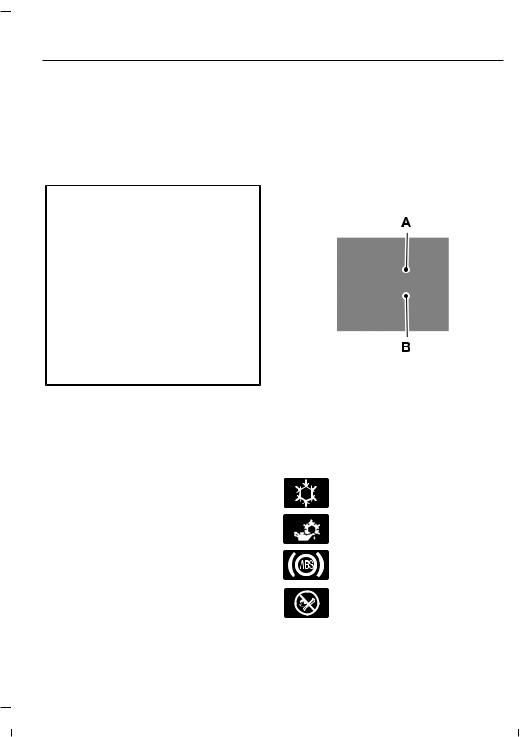
Introduction
ABOUT THIS MANUAL
Thank you for choosing Ford. We recommend that you take some time to get to know your vehicle by reading this manual. The more that you know about your vehicle, the greater the safety and pleasure you will get from driving it.
 WARNING: Driving while distracted can result in loss of vehicle control, crash and injury. We strongly recommend that you use extreme caution when using any device that may take your focus off the road. Your primary responsibility is the safe operation of your vehicle. We recommend against the use of any hand-held device while driving and encourage the use of voice-operated systems when possible. Make sure you are aware of all applicable local laws that may affect the use of electronic devices while driving.
WARNING: Driving while distracted can result in loss of vehicle control, crash and injury. We strongly recommend that you use extreme caution when using any device that may take your focus off the road. Your primary responsibility is the safe operation of your vehicle. We recommend against the use of any hand-held device while driving and encourage the use of voice-operated systems when possible. Make sure you are aware of all applicable local laws that may affect the use of electronic devices while driving.
Note: This manual describes product features and options available throughout the range of available models, sometimes even before they are generally available. It may describe options not fitted to the vehicle you have purchased.
Note: Some of the illustrations in this manual may show features as used in different models, so may appear different to you on your vehicle.
Note: Always use and operate your vehicle in line with all applicable laws and regulations.
Note: Pass on this manual when selling your vehicle. It is an integral part of your vehicle.
Note: Either Ford Motor Company or an authorized Ford dealer may have originally sold this incomplete vehicle to a vehicle modifier who upfitted it. As a result, it may have different options and features than described in this manual.
This manual may qualify the location of a component as left-hand side or right-hand side. The side is determined when facing forward in the seat.
E154903
A Right-hand side.
BLeft-hand side.
SYMBOLS GLOSSARY
These are some of the symbols you may see on your vehicle.
Air conditioning system
Air conditioning system lubricant type
Anti-lock braking system
Avoid smoking, flames or sparks
9
2020 Transit (TTH) Canada/United States of America, LK3J 19A321 AA enUSA, Edition date: 201908, First-Printing
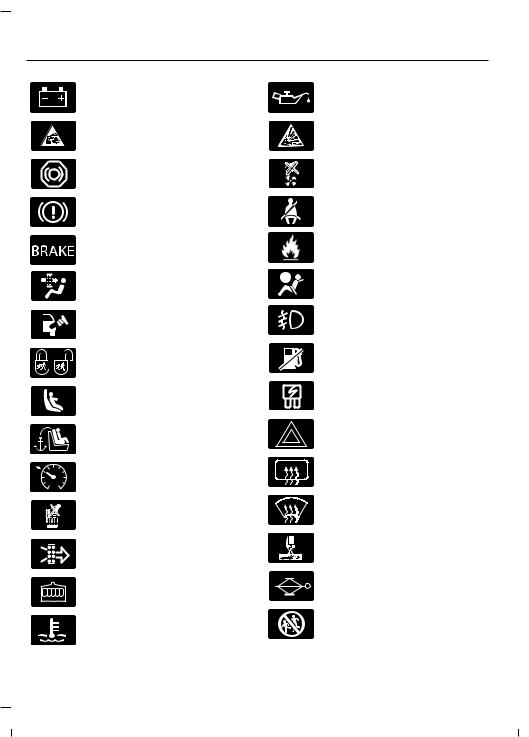
Introduction
Battery
Battery acid
Brake fluid - non petroleum based
Brake system
Brake system
Cabin air filter
Check fuel cap
Child safety door lock or unlock
Child seat lower anchor
Child seat tether anchor
Cruise control
E71340
Do not open when hot
Engine air filter
Engine coolant
Engine coolant temperature
10
Engine oil
Explosive gas
Fan warning
Fasten seatbelt
Flammable
Front airbag
Front fog lamps
Fuel pump reset
Fuse compartment
Hazard flashers
Heated rear window
Windshield defrosting system
Interior luggage compartment release
Jack
Keep out of reach of children
2020 Transit (TTH) Canada/United States of America, LK3J 19A321 AA enUSA, Edition date: 201908, First-Printing
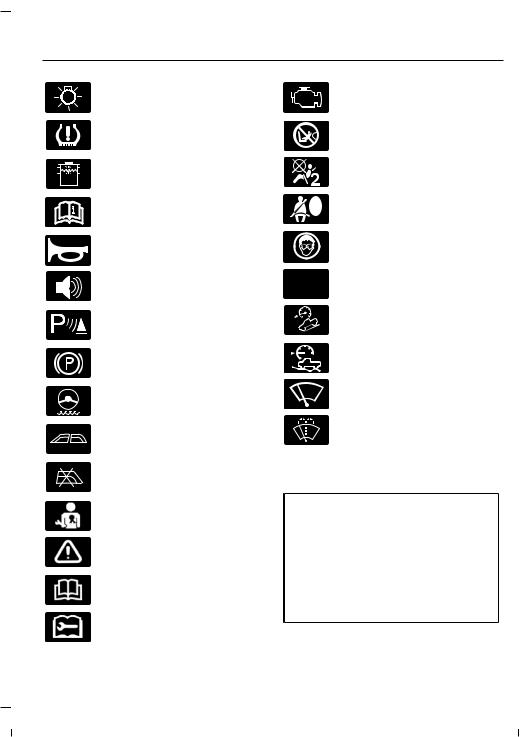
Introduction
Lighting control
Low tire pressure warning
Maintain correct fluid level
Note operating instructions
Horn control
Panic alarm
Parking aid
E139213
Parking brake
Power steering fluid
Power windows front/rear
Power window lockout
Requires registered technician
Safety alert
See Owner's Manual
See Service Manual
Service engine soon
Passenger airbag activated
Passenger airbag deactivated
Side airbag
Shield the eyes
 Stability control
Stability control
Hill descent control
Trail control
Windshield wiping system
Windshield wash and wipe
DATA RECORDING
 WARNING: Do not connect wireless plug-in devices to the data link connector. Unauthorized third parties could gain access to vehicle data and impair the performance of safety related systems. Only allow repair facilities that follow our service and repair instructions to connect their equipment to the data link connector.
WARNING: Do not connect wireless plug-in devices to the data link connector. Unauthorized third parties could gain access to vehicle data and impair the performance of safety related systems. Only allow repair facilities that follow our service and repair instructions to connect their equipment to the data link connector.
11
2020 Transit (TTH) Canada/United States of America, LK3J 19A321 AA enUSA, Edition date: 201908, First-Printing

Introduction
We respect your privacy and are committed to protecting it. The information contained in this publication was correct at the time of going to print, but as technology rapidly changes, we recommend that you visit the regional Ford website for the latest information.
Your vehicle has electronic control units that have data recording functionality and the ability to permanently or temporarily store data. This data could include information on the condition and status of your vehicle, vehicle maintenance requirements, events and malfunctions. The types of data that can be recorded are described in this section. Some of the data recorded is stored in event logs or error logs.
Note: Error logs are reset following a service or repair.
Note: We may provide information in response to requests from law enforcement, other government authorities and third parties acting with lawful authority or through a legal process. Such information could be used by them in legal proceedings.
Data recorded includes, for example:
•Operating states of system components, for example, fuel level, tire pressure and battery charge level.
•Vehicle and component status, for example, wheel speed, deceleration, lateral acceleration and seatbelt status.
•Events or errors in essential systems, for example, headlamps and brakes.
•System responses to driving situations, for example, airbag deployment and stability control.
•Environmental conditions, for example, temperature.
12
Some of this data, when used in combination with other information, for example, an accident report, damage to a vehicle or eyewitness statements, could be associated with a specific person.
Service Data
Service data recorders in your vehicle are capable of collecting and storing diagnostic information about your vehicle. This potentially includes information about the performance or status of various systems and modules in the vehicle, such as engine, throttle, steering or brake systems. In order to properly diagnose and service your vehicle, Ford Motor Company (Ford of Canada in Canada), and service and repair facilities may access or share among them vehicle diagnostic information received through a direct connection to your vehicle when diagnosing or servicing your vehicle. Additionally, Ford Motor Company (Ford of Canada, in Canada) may, where permitted by law, use vehicle diagnostic information for vehicle improvement or with other information we may have about you, for example, your contact information, to offer you products or services that may interest you. Data may be provided to our service providers such as part suppliers that may help diagnose malfunctions, and who are similarly obligated to protect data. We retain this data only as long as necessary to perform these functions or to comply with law. We may provide information where required in response to official requests to law enforcement or other government authorities or third parties acting with lawful authority or court order, and such information may be used in legal proceedings. For U.S. only (if equipped), if you choose to use connected apps and services, you consent that certain diagnostic information may also be accessed electronically by Ford Motor Company and Ford authorized service
2020 Transit (TTH) Canada/United States of America, LK3J 19A321 AA enUSA, Edition date: 201908, First-Printing

Introduction
facilities, and that the diagnostic information may be used to provide services to you, personalizing your experience, troubleshoot, and to improve products and services and offer you products and services that may interest you, where permitted by law. For Canada only, for more information, please review the Ford of Canada privacy policy at www.ford.ca, including our U.S. data storage and use of service providers in other jurisdictions who may be subject to legal requirements in Canada, the United States and other countries applicable to them, for example, lawful requirements to disclose personal information to governmental authorities in those countries.
Event Data
This vehicle is equipped with an event data recorder. The main purpose of an event data recorder is to record, in certain crash or near crash-like situations, such as an airbag deployment or hitting a road obstacle; this data assist in understanding how a vehicle’s systems performed. The event data recorder is designed to record data related to vehicle dynamics and safety systems for a short period of time, typically 30 seconds or less.
The event data recorder in this vehicle is designed to record such data as:
•How various systems in your vehicle were operating;
•Whether or not the driver and passenger seatbelts were buckled/fastened;
•How far (if at all) the driver was depressing the accelerator and/or the brake pedal; and
•How fast the vehicle was traveling; and
•Where the driver was positioning the steering wheel.
13
This data can help provide a better understanding of the circumstances in which crashes and injuries occur.
Note: Event data recorder data is recorded by your vehicle only if a non-trivial crash situation occurs; no data is recorded by the event data recorder under normal driving conditions and no personal data or information (e.g., name, gender, age, and crash location) is recorded. However, other parties, such as law enforcement, could combine the event data recorder data with the type of personally identifying data routinely acquired during a crash investigation.
To read data recorded by an event data recorder, special equipment is required, and access to the vehicle or the event data recorder is needed. In addition to the vehicle manufacturer, other parties, such as law enforcement, that have such special equipment, can read the information if they have access to the vehicle or the event data recorder.
Comfort, Convenience and
Entertainment Data
Your vehicle has electronic control units that have the ability to store data based on your personalized settings. The data is stored locally in the vehicle or on devices that you connect to it, for example, a USB drive or digital music player. You can delete some of this data and also choose whether to share it through the services to which you subscribe. See Settings (page 445).
Comfort and Convenience Data
Data recorded includes, for example:
•Seat and steering wheel position.
•Climate control settings.
•Radio presets.
2020 Transit (TTH) Canada/United States of America, LK3J 19A321 AA enUSA, Edition date: 201908, First-Printing
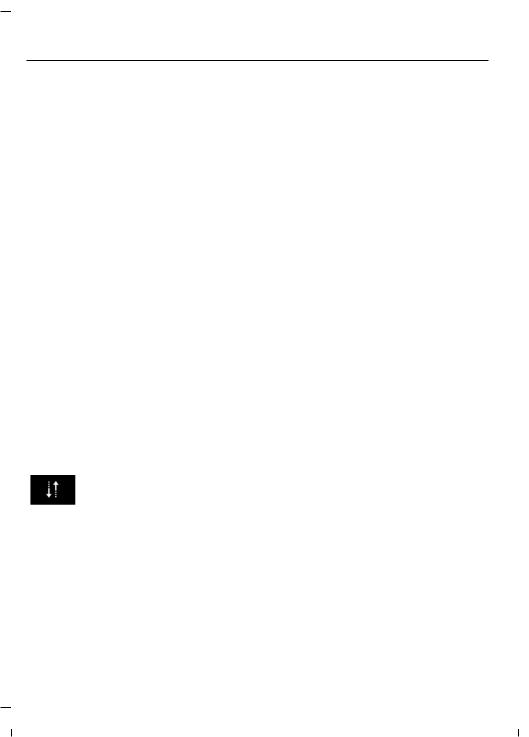
Introduction
Entertainment Data
Data recorded includes, for example:
•Music, videos or album art.
•Contacts and corresponding address book entries.
•Navigation destinations.
Services That We Provide
If you use our services, we collect and use data, for example, account information, vehicle location and driving characteristics, that could identify you. We transmit this data through a dedicated, protected connection. We only collect and use data to enable your use of our services to which you have subscribed, with your consent or where permitted by law. For additional information, see the terms and conditions of the services to which you have subscribed.
Services That Third Parties
Provide
We recommend that you review the terms and conditions and data privacy information for any services to which you subscribe. We take no responsibility for services that third parties provide.
Vehicles With a Modem(If Equipped)
The modem has a SIM. The modem was enabled when your vehicle was built and periodically
sends messages to stay connected to the cell phone network, receive automatic software updates and send vehicle-related information to us, for example, diagnostic information. These messages could include information that identifies your vehicle, the SIM and the electronic serial number of the modem. Cell phone network
14
service providers could have access to additional information, for example, cell phone network tower identification. For additional information about our privacy policy, visit www.FordConnected.com or refer to your local Ford website.
Note: The modem continues to send this information unless you disable the modem or stop the modem from sharing vehicle data by changing the modem settings. See
Connected Vehicle (page 391).
Note: The service can be unavailable or interrupted for a number of reasons, for example, environmental or topographical conditions and data plan coverage.
Note: To find out if your vehicle has a modem, visit www.FordConnected.com.
Vehicles With SYNC
Mobile Device Data
If you connect a mobile device to your vehicle, you can display data from your device on the touchscreen for example, music and album art. You can share your vehicle data with mobile apps on your device through the system. See Apps (page 443).
The mobile apps function operates by your connected device sending data to us in the United States. The data is encrypted and includes the vehicle identification number of your vehicle, the SYNC module serial number, odometer, enabled apps, usage statistics and debugging information. We retain it only as long as necessary to provide the service, to troubleshoot, for continuous improvement and to offer you products and services that may be of interest to you according to your preferences and where allowed by law.
2020 Transit (TTH) Canada/United States of America, LK3J 19A321 AA enUSA, Edition date: 201908, First-Printing

Introduction
If you connect a cell phone to the system, the system creates a profile that links to that cell phone. The cell phone profile enables more mobile features and efficient operation. The profile contains, for example, data from your phonebook, read and unread text messages and call history, including history of calls when your cell phone was not connected to the system.
If you connect a media device, the system creates and retains a media device index of supported media content. The system also records a short diagnostic log of approximately 10 minutes of all recent system activity.
The cell phone profile, media device index and diagnostic log remain in your vehicle unless you delete them and are generally accessible only in your vehicle when you connect your cell phone or media device. If you no longer plan to use the system or your vehicle, we recommend you use the master reset function to erase the stored information. See Settings (page 445).
System data cannot be accessed without special equipment and access to your vehicle's module.
For additional information about our privacy policy, refer to your local Ford website.
Note: To find out if your vehicle has a connectivity technology, visit www.FordConnected.com.
Vehicles With an Emergency Call
System
When the emergency call system is active, it may disclose to emergency services that your vehicle has been in a crash involving the deployment of an airbag or activation of the fuel pump shut-off. Certain versions or updates to the emergency call system may also be capable of electronically or verbally disclosing to emergency services operators your vehicle location or other
details about your vehicle or crash to assist emergency services operators to provide the most appropriate emergency services. If you do not want to disclose this information, do not activate the emergency call system.
Note: You cannot deactivate emergency call systems that are required by law.
Examples of data that the system transmits are:
•Vehicle identification number.
•Vehicle fuel type.
•Current time.
•Vehicle location and direction.
•Whether the call was automatically or manually initiated.
•Vehicle category.
Note: You cannot deactivate emergency call systems that are required by law.
PERCHLORATE
Certain components in your vehicle such as airbag modules, seatbelt pretensioners and remote control batteries may contain perchlorate material. Special handling may apply for service or vehicle end of life disposal.
15
2020 Transit (TTH) Canada/United States of America, LK3J 19A321 AA enUSA, Edition date: 201908, First-Printing

Introduction
For more information visit:
Web Address
www.dtsc.ca.gov/hazardouswaste/perchlorate
REPLACEMENT PARTS RECOMMENDATION
Warranty on Replacement Parts
Genuine Ford and Motorcraft replacement parts are the only replacement parts that benefit from a Ford Warranty. The Ford Warranty may not cover damage caused to your vehicle as a result of failed non-Ford parts. For additional information, refer to the terms and conditions of the Ford Warranty.
We have built your vehicle to the highest standards using quality parts. We recommend that you demand the use of genuine Ford and Motorcraft parts whenever your vehicle requires scheduled maintenance or repair. You can clearly identify genuine Ford and Motorcraft parts by looking for the Ford, FoMoCo or Motorcraft branding on the parts or their packaging.
Scheduled Maintenance and
Mechanical Repairs
One of the best ways for you to make sure that your vehicle provides years of service is to have it maintained in line with our recommendations using parts that conform to the specifications detailed in this Owner’s Manual. Genuine Ford and Motorcraft parts meet or exceed these specifications.
Collision Repairs
We hope that you never experience a collision, but accidents do happen. Genuine Ford replacement collision parts meet our stringent requirements for fit, finish, structural integrity, corrosion protection and dent resistance. During vehicle development we validate that these parts deliver the intended level of protection as a whole system. A great way to know for sure you are getting this level of protection is to use genuine Ford replacement collision parts.
16
SPECIAL NOTICES
New Vehicle Limited Warranty
For a detailed description of what is covered and what is not covered by your vehicle’s New Vehicle Limited Warranty, refer to the Warranty Manual that is provided to you along with your Owner’s Manual.
Special Instructions
For your added safety, your vehicle is fitted with sophisticated electronic controls.
 WARNING: You risk death or serious injury to yourself and others if you do not follow the instruction highlighted by the warning symbol. Failure to follow the specific warnings and instructions could result in personal injury.
WARNING: You risk death or serious injury to yourself and others if you do not follow the instruction highlighted by the warning symbol. Failure to follow the specific warnings and instructions could result in personal injury.
 WARNING: Never place front seat mounted rear-facing child or infant seats in front of an active passenger airbag.
WARNING: Never place front seat mounted rear-facing child or infant seats in front of an active passenger airbag.
2020 Transit (TTH) Canada/United States of America, LK3J 19A321 AA enUSA, Edition date: 201908, First-Printing
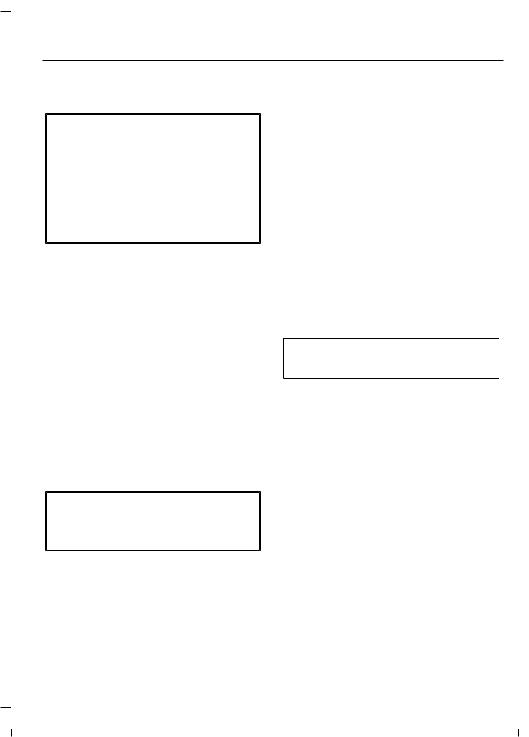
Introduction
On Board Diagnostics Data Link
Connector
 WARNING: Do not connect wireless plug-in devices to the data link connector. Unauthorized third parties could gain access to vehicle data and impair the performance of safety related systems. Only allow repair facilities that follow our service and repair instructions to connect their equipment to the data link connector.
WARNING: Do not connect wireless plug-in devices to the data link connector. Unauthorized third parties could gain access to vehicle data and impair the performance of safety related systems. Only allow repair facilities that follow our service and repair instructions to connect their equipment to the data link connector.
Your vehicle has an OBD Data Link Connector (DLC) that is used in conjunction with a diagnostic scan tool for vehicle diagnostics, repairs and reprogramming services. Installing an aftermarket device that uses the DLC during normal driving for purposes such as remote insurance company monitoring, transmission of vehicle data to other devices or entities, or altering the performance of the vehicle, may cause interference with or even damage to vehicle systems. We do not recommend or endorse the use of aftermarket plug-in devices unless approved by Ford. The vehicle Warranty will not cover damage caused by an aftermarket plug-in device.
NoticetoOwnersofPickupTrucksand
Utility Type Vehicles
 WARNING: Utility vehicles have a significantly higher rollover rate than other types of vehicles.
WARNING: Utility vehicles have a significantly higher rollover rate than other types of vehicles.
Before you drive your vehicle, please read this Owner’s Manual carefully. Your vehicle is not a passenger car. As with other vehicles of this type, failure to operate this vehicle correctly may result in loss of vehicle control, vehicle rollover, personal injury or death.
Using Your Vehicle With a Snowplow
Do not use this vehicle for snowplowing.
Your vehicle is not equipped with a snowplowing package.
Using Your Vehicle as an Ambulance
If your light truck is equipped with the Ford Ambulance Preparation Package, it may be utilized as an ambulance. Ford urges ambulance manufacturers to follow the recommendations of the Ford Incomplete Vehicle Manual, Ford Truck Body Builder’s Layout Book and the Qualified Vehicle Modifiers (QVM) Guidelines as well as pertinent supplements.
For additional information, please contact the Truck Body Builders Advisory Service:
Web Address
www.fleet.ford.com/truckbbas
You can also call us at
1–877–840–4338.
17
2020 Transit (TTH) Canada/United States of America, LK3J 19A321 AA enUSA, Edition date: 201908, First-Printing
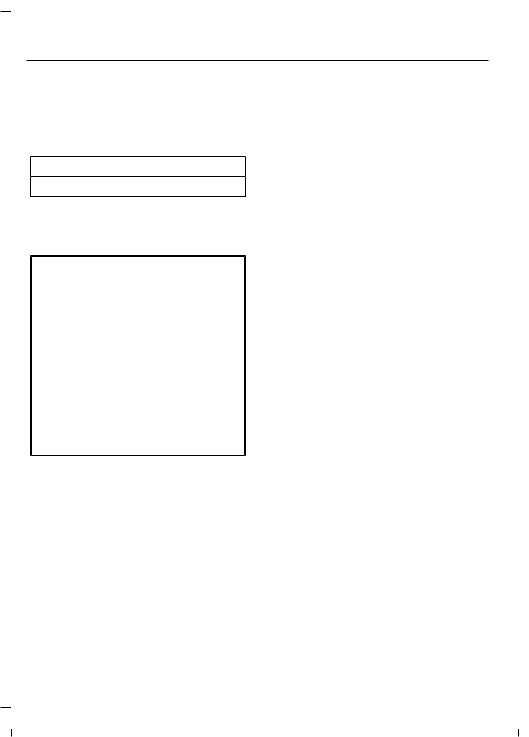
Introduction
Other Vehicle Modifications
Ifconvertingormodifyingyourvehicle from production specification,refer to the Truck Body Builder Advisory website:
Web Address
www.fleet.ford.com/truckbbas
MOBILE COMMUNICATIONS EQUIPMENT
 WARNING: Driving while distracted can result in loss of vehicle control, crash and injury. We strongly recommend that you use extreme caution when using any device that may take your focus off the road. Your primary responsibility is the safe operation of your vehicle. We recommend against the use of any hand-held device while driving and encourage the use of voice-operated systems when possible. Make sure you are aware of all applicable local laws that may affect the use of electronic devices while driving.
WARNING: Driving while distracted can result in loss of vehicle control, crash and injury. We strongly recommend that you use extreme caution when using any device that may take your focus off the road. Your primary responsibility is the safe operation of your vehicle. We recommend against the use of any hand-held device while driving and encourage the use of voice-operated systems when possible. Make sure you are aware of all applicable local laws that may affect the use of electronic devices while driving.
Using mobile communications equipment is becoming increasingly important in the conduct of business and personal affairs. However, you must not compromise your own or others’ safety when using such equipment. Mobile communications can enhance personal safety and security when appropriately used, particularly in emergency situations. Safety must be paramount when using mobile
communications equipment to avoid negating these benefits. Mobile communication equipment includes, but is not limited to, cellular phones, pagers, portable email devices, text messaging devices and portable two-way radios.
EXPORT UNIQUE OPTIONS
For your particular global region, your vehicle may be equipped with features and options that are different from the features and options that are described in this Owner’s Manual. A market unique supplement may be supplied that complements this book. By referring to the market unique supplement, if provided, you can properly identify those features, recommendations and specifications that are unique to your vehicle. This Owner’s Manual is written primarily for the U.S. and Canadian Markets. Features or equipment listed as standard may be different on units built for export. Refer to this Owner’s
Manual for all other required information and warnings.
18
2020 Transit (TTH) Canada/United States of America, LK3J 19A321 AA enUSA, Edition date: 201908, First-Printing

Environment
PROTECTING THE
ENVIRONMENT
You should play your part in protecting the environment. Correct vehicle usage and the authorized disposal of waste, cleaning and lubrication materials are significant steps toward this aim.
For additional information about our sustainability progress and initiatives, visit www.sustainability.ford.com.
19
2020 Transit (TTH) Canada/United States of America, LK3J 19A321 AA enUSA, Edition date: 201908, First-Printing
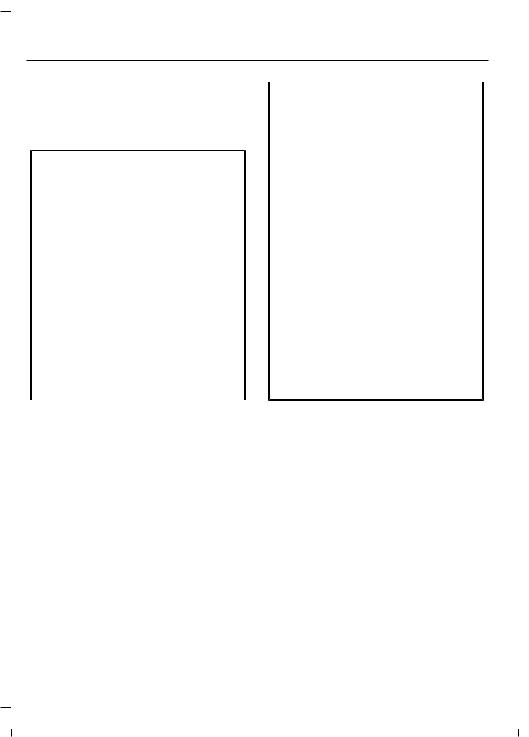
Child Safety
GENERAL INFORMATION
See the following sections for directions on how to properly use safety restraints for children.
 WARNING:Always make sure your child is secured properly in a device that is appropriate for their height, age and weight. Child safety restraints must be bought separately from your vehicle. Failure to follow these instructions and guidelines may result in an increased risk of serious injury or death to your child.
WARNING:Always make sure your child is secured properly in a device that is appropriate for their height, age and weight. Child safety restraints must be bought separately from your vehicle. Failure to follow these instructions and guidelines may result in an increased risk of serious injury or death to your child.
 WARNING:All children are shaped differently. The National Highway Traffic Safety Administration and other safety organizations, base their recommendations for child restraints on probable child height, age and weight thresholds, or on the minimum requirements of the law. We recommend that you check with a NHTSA Certified Child Passenger Safety Technician
WARNING:All children are shaped differently. The National Highway Traffic Safety Administration and other safety organizations, base their recommendations for child restraints on probable child height, age and weight thresholds, or on the minimum requirements of the law. We recommend that you check with a NHTSA Certified Child Passenger Safety Technician
20
(CPST) to make sure that you properly install the child restraint in your vehicle and that you consult your pediatrician to make sure you have a child restraint appropriate for your child. To locate a child restraint fitting station and CPST, contact NHTSA toll free at 1-888-327-4236 or go to www.nhtsa.dot.gov. In Canada, contact Transport Canada toll free at 1-800-333-0371 or go to www.tc.gc.ca to find a Child Car Seat Clinic in your area. Failure to properly restrain children in child restraints made especially for their height, age and weight, may result in an increased risk of serious injury or death to your child.
 WARNING: On hot days, the temperature inside the vehicle can rise very quickly. Exposure of people or animals to these high temperatures for even a short time can cause death or serious heat related injuries, including brain damage. Small children are particularly at risk.
WARNING: On hot days, the temperature inside the vehicle can rise very quickly. Exposure of people or animals to these high temperatures for even a short time can cause death or serious heat related injuries, including brain damage. Small children are particularly at risk.
2020 Transit (TTH) Canada/United States of America, LK3J 19A321 AA enUSA, Edition date: 201908, First-Printing
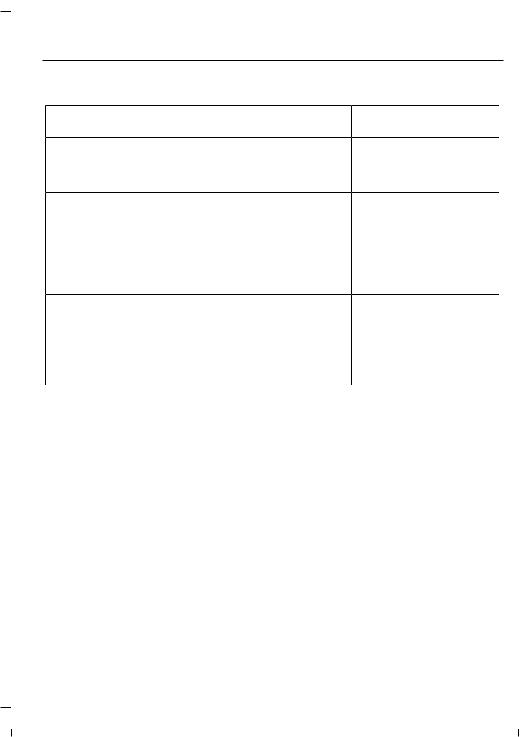
Child Safety
Recommendations for Safety Restraints for Children
Child
Infants or toddlers
Small children
Child Size, Height, Weight, or Age |
Recommended Restraint |
|
Type |
||
|
||
Children weighing 40 lb (18 kg) or less |
Use a child restraint |
|
(sometimes called an |
||
(generally age four or younger). |
infant carrier, convertible |
|
|
seat, or toddler seat). |
|
Children who have outgrown or no longer |
|
|
properly fit in a child restraint (generally |
|
|
children who are less than 57 in (1.45 m) |
Use a belt-positioning |
|
tall, are greater than age four and less |
||
than age 12, and between 40 lb (18 kg) |
booster seat. |
|
and 80 lb (36 kg) and upward to 100 lb |
|
|
(45 kg) if recommended by your child |
|
|
restraint manufacturer). |
|
Children who have outgrown or no longer properly fit in a belt-positioning booster seat (generally children who are at least
Larger children 57 in (1.45 m) tall or greater than 80 lb (36 kg) or 100 lb (45 kg) if recommended
by child restraint manufacturer).
Use a vehicle seatbelt having the lap belt snug and low across the hips, shoulder belt centered across the shoulder and chest, and seat backrest
upright.
•You are required by law to properly use child restraints for infants and toddlers in the United States and Canada.
•Many states and provinces require that small children use approved booster seats until they reach age eight, a height of 57 in (1.45 m) tall, or 80 lb (36 kg). Check your local and state or provincial laws for specific requirements about the safety of children in your vehicle.
•When possible, always properly restrain children 12 years of age and under in a rear seating position of your vehicle. Accident statistics suggest that children are safer when properly restrained in the rear seating positions than in a front seating position.
•When installing a rear facing child restraint, adjust the vehicle seats to avoid interference between the child restraint and the vehicle seat in front of the child restraint.
21
2020 Transit (TTH) Canada/United States of America, LK3J 19A321 AA enUSA, Edition date: 201908, First-Printing
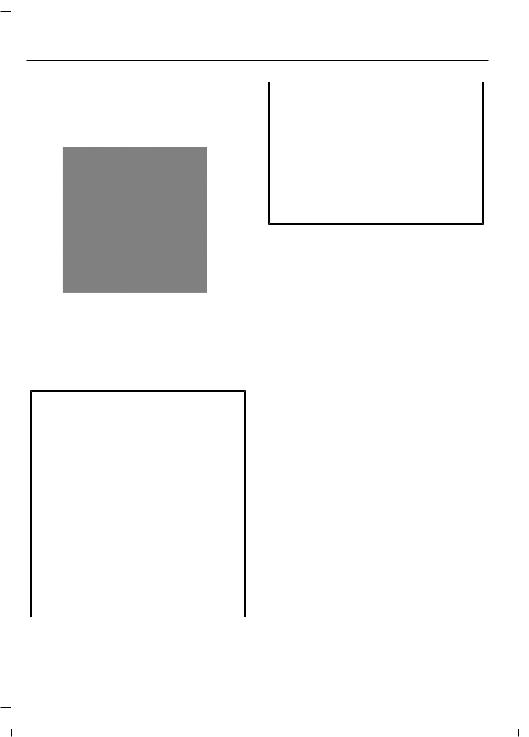
Child Safety
INSTALLING CHILD
RESTRAINTS
Child Safety Restraint
E142594
Use a child safety restraint (sometimes called an infant carrier, convertible seat, or toddler seat) for infants, toddlers, or children weighing 40 lb (18 kg) or less (generally age four or younger).
Using Lap and Shoulder Belts
 WARNING: Do not place a rearward facing child restraint in front of an active airbag. Failure to follow this instruction could result in personal injury or death.
WARNING: Do not place a rearward facing child restraint in front of an active airbag. Failure to follow this instruction could result in personal injury or death.
 WARNING: Properly secure children 12 years old and under in a rear seating position whenever possible. If you are unable to properly secure all children in a rear seating position, properly secure the largest child on the front seat. If you must use a forward facing child restraint on the front seat, move the seat as far back as possible. Failure to follow these instructions could result in personal injury or death.
WARNING: Properly secure children 12 years old and under in a rear seating position whenever possible. If you are unable to properly secure all children in a rear seating position, properly secure the largest child on the front seat. If you must use a forward facing child restraint on the front seat, move the seat as far back as possible. Failure to follow these instructions could result in personal injury or death.
 WARNING: Depending on where you secure a child restraint, and depending on the child restraint design, you may block access to certain seatbelt buckle assemblies and LATCH lower anchors, rendering those features potentially unusable. To avoid risk of injury, make sure occupants only use seating positions where they are able to be properly restrained.
WARNING: Depending on where you secure a child restraint, and depending on the child restraint design, you may block access to certain seatbelt buckle assemblies and LATCH lower anchors, rendering those features potentially unusable. To avoid risk of injury, make sure occupants only use seating positions where they are able to be properly restrained.
When installing a child safety restraint with combination lap and shoulder belts:
•Use the correct seatbelt buckle for that seating position.
•Insert the belt tongue into the correct buckle until you hear a distinct click and feel it latch. Make sure the tongue is securely fastened in the buckle.
•Keep the buckle release button pointing up and away from the safety restraint, with the tongue between the child restraint and the release button, to prevent accidental unbuckling.
•Place the vehicle seat upon which the child restraint will be installed in the upright position.
•Put the seatbelt in the automatic locking mode. See Step 5. Your vehicle does not require the use of a locking clip.
Perform the following steps when installing the child restraint with combination lap and shoulder belts:
Note: Although the child restraint illustrated is a forward facing child restraint, the steps are the same for installing a rearward facing child restraint.
22
2020 Transit (TTH) Canada/United States of America, LK3J 19A321 AA enUSA, Edition date: 201908, First-Printing
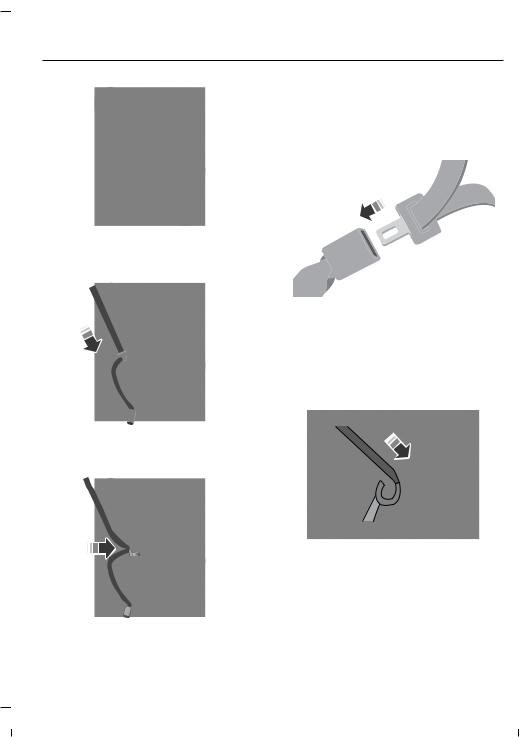
Child Safety
E142528
1.Position the child safety restraint in a seat with a combination lap and shoulder belt.
3.While holding the shoulder and lap belt portions together, route the tongue through the child restraint according to the child restraint manufacturer's instructions. Make sure the belt webbing is not twisted.
E142529
2.Pull down on the shoulder belt and then grasp the shoulder belt and lap belt together.
E142530
E142531
4.Insert the belt tongue into the correct buckle (the buckle closest to the direction the tongue is coming from) for that seating position until you hear a distinct click and feel the latch engage. Make sure the tongue is latched securely by pulling on it.
E142875
5.To put the retractor in the automatic locking mode, grasp the shoulder portion of the belt and pull downward until all of the belt is pulled out.
Note: The automatic locking mode is available on the front passenger and rear seats.
23
2020 Transit (TTH) Canada/United States of America, LK3J 19A321 AA enUSA, Edition date: 201908, First-Printing
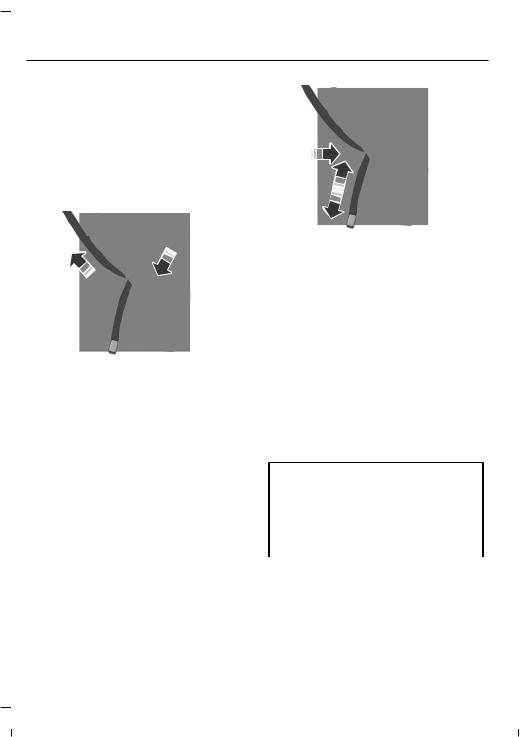
Child Safety
6.Allow the belt to retract to remove slack. The belt clicks as it retracts to indicate it is in the automatic locking mode.
7.Try to pull the belt out of the retractor to make sure the retractor is in the automatic locking mode (you should not be able to pull more belt out). If the retractor is not locked, unbuckle the belt and repeat Steps 5 and 6.
E142534
E142533
8.Remove remaining slack from the belt. Force the seat down with extra weight, for example, by pressing down or kneeling on the child restraint while pulling up on the shoulder belt. This is necessary to remove the remaining slack that exists once the extra weight of the child is added to the child restraint. It also helps to achieve the correct snugness of the child restraint to your vehicle. Sometimes, a slight lean toward the buckle helps to remove remaining slack from the belt.
9.Attach the tether strap (if the child restraint is equipped).
24
10.Before placing the child in the seat, forcibly move the seat forward and back to make sure the seat is securely held in place. To check this, grab the seat at the belt path and attempt to move it side to side and forward and back. There should be no more than 1 in (2.5 cm) of movement for correct installation.
We recommend checking with a NHTSA Certified Child Passenger Safety Technician to make certain the child restraint is correctly installed. In Canada, check with Transport Canada for referral to a Child Car Seat Clinic.
Using Lower Anchors and Tethers for Children (LATCH)
 WARNING: Do not attach two child safety restraints to the same anchor. In a crash, one anchor may not be strong enough to hold two child safety restraint attachments and may break, causing serious injury or death.
WARNING: Do not attach two child safety restraints to the same anchor. In a crash, one anchor may not be strong enough to hold two child safety restraint attachments and may break, causing serious injury or death.
2020 Transit (TTH) Canada/United States of America, LK3J 19A321 AA enUSA, Edition date: 201908, First-Printing
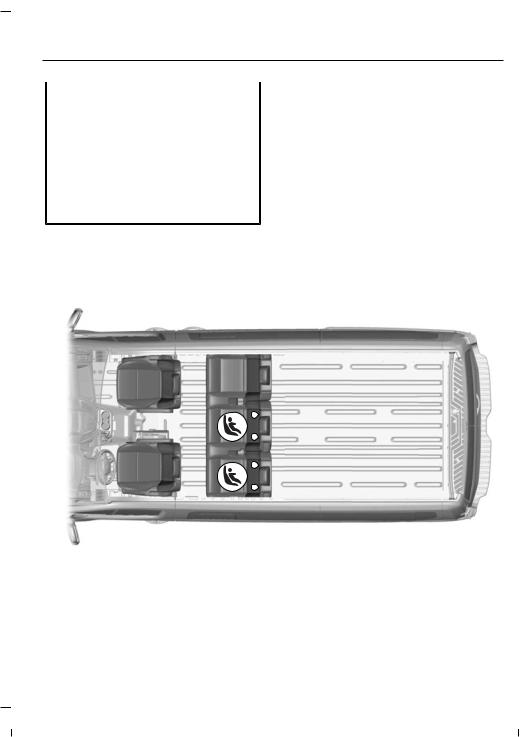
Child Safety
 WARNING: Depending on where you secure a child restraint, and depending on the child restraint design, you may block access to certain seatbelt buckle assemblies and LATCH lower anchors, rendering those features potentially unusable. To avoid risk of injury, make sure occupants only use seating positions where they are able to be properly restrained.
WARNING: Depending on where you secure a child restraint, and depending on the child restraint design, you may block access to certain seatbelt buckle assemblies and LATCH lower anchors, rendering those features potentially unusable. To avoid risk of injury, make sure occupants only use seating positions where they are able to be properly restrained.
The LATCH system is composed of three vehicle anchor points: two lower anchors where the seat backrest and seat cushion meet (called the seat bight) and one top tether anchor behind that seating position.
LATCH compatible child safety restraints have two rigid or webbing mounted attachments that connect to the two lower anchors at the LATCH equipped seating positions in your vehicle. This type of attachment method eliminates the need to use seatbelts to attach the child restraint, however the seatbelt can still be used to attach the child restraint. For forward-facing child restraints, the top tether strap must also be attached to the correct top tether anchor, if a top tether strap has been provided with your child restraint.
E311548
25
2020 Transit (TTH) Canada/United States of America, LK3J 19A321 AA enUSA, Edition date: 201908, First-Printing
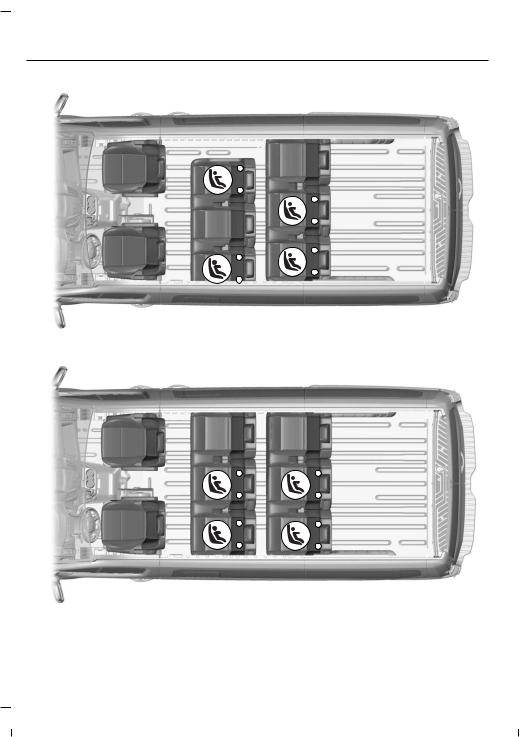
Child Safety
E258858
E254574
26
2020 Transit (TTH) Canada/United States of America, LK3J 19A321 AA enUSA, Edition date: 201908, First-Printing
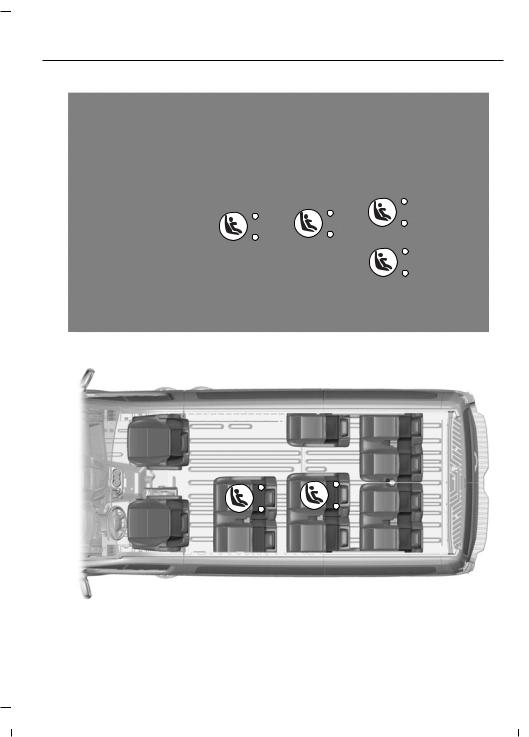
Child Safety
E258864
E282290
27
2020 Transit (TTH) Canada/United States of America, LK3J 19A321 AA enUSA, Edition date: 201908, First-Printing
